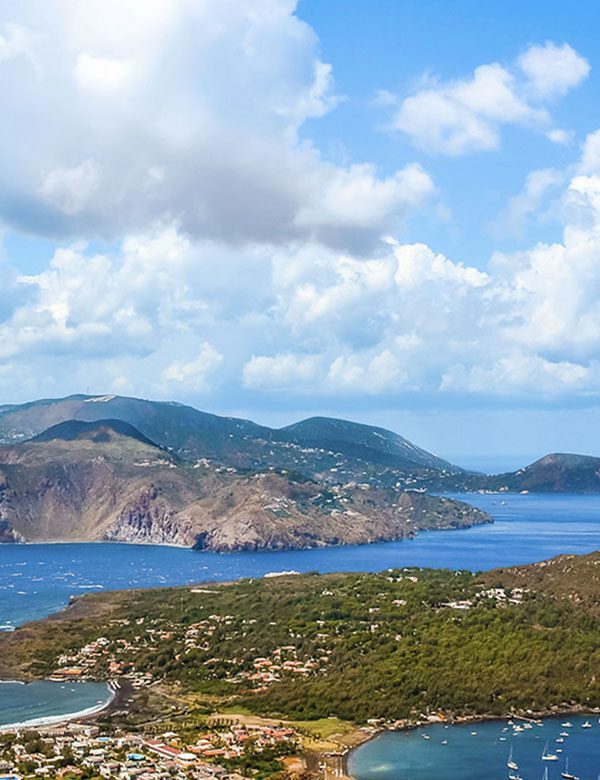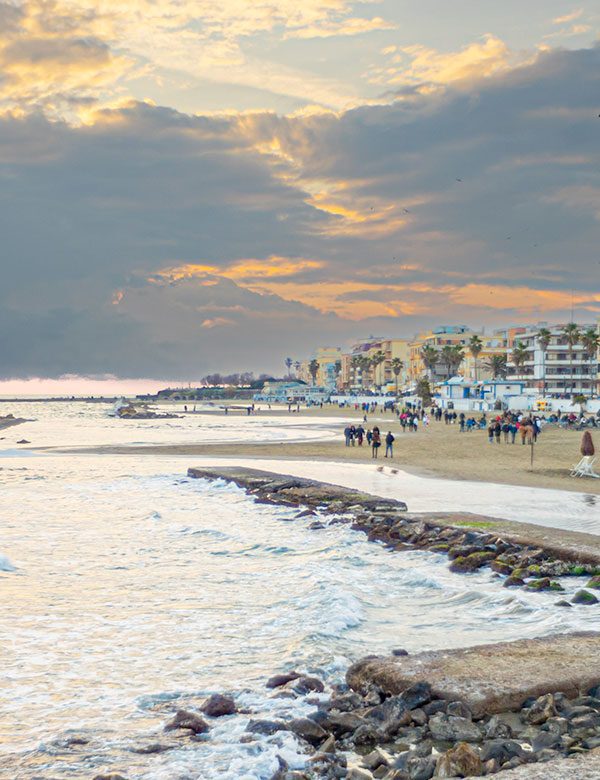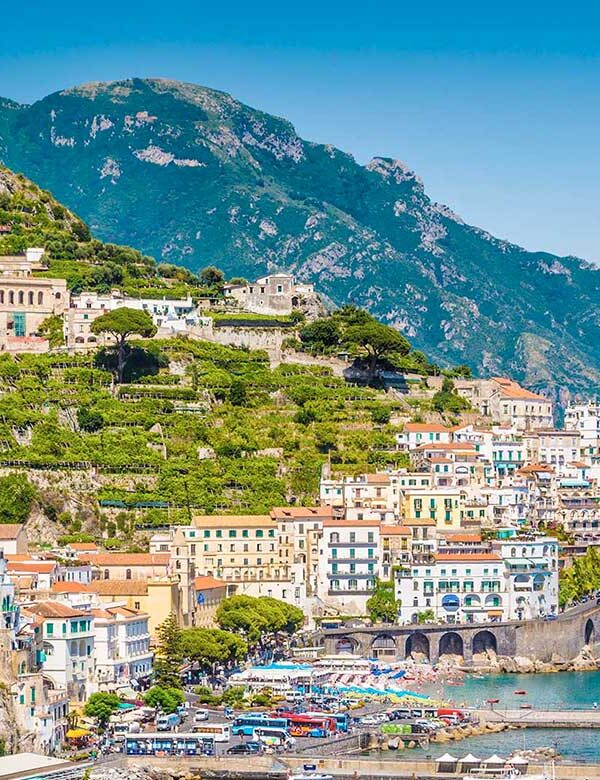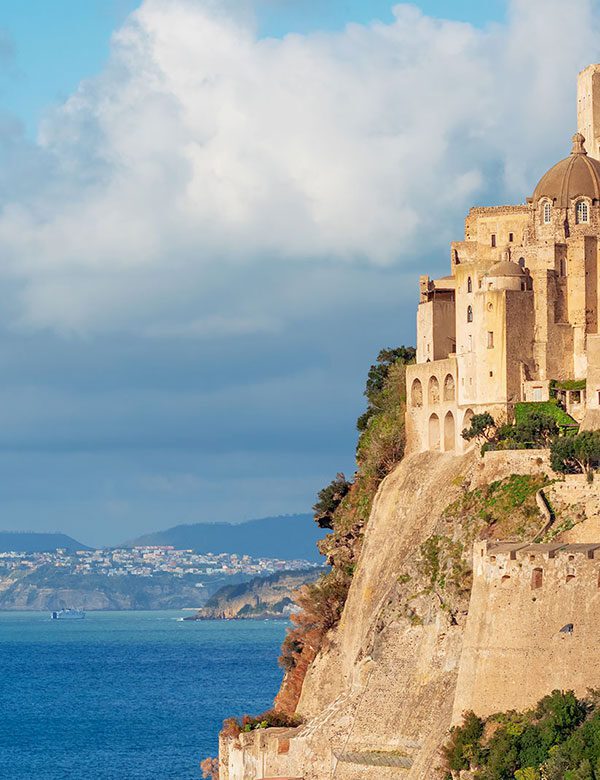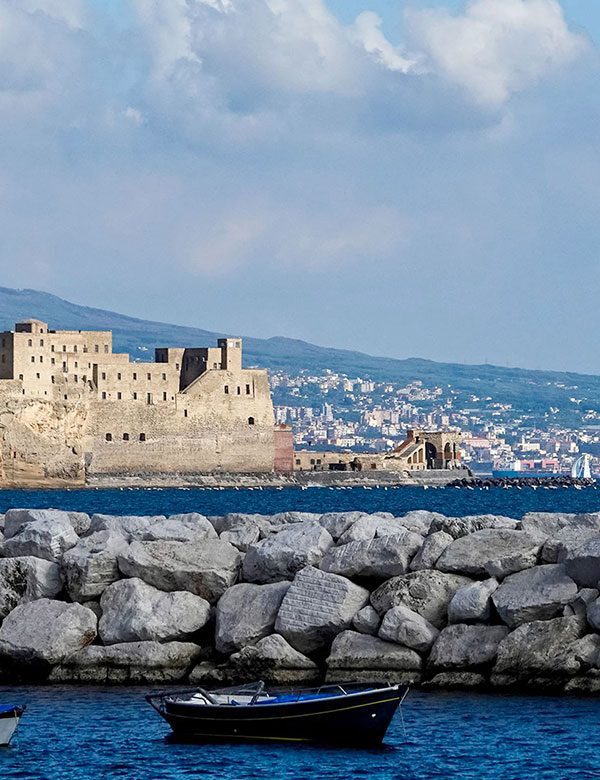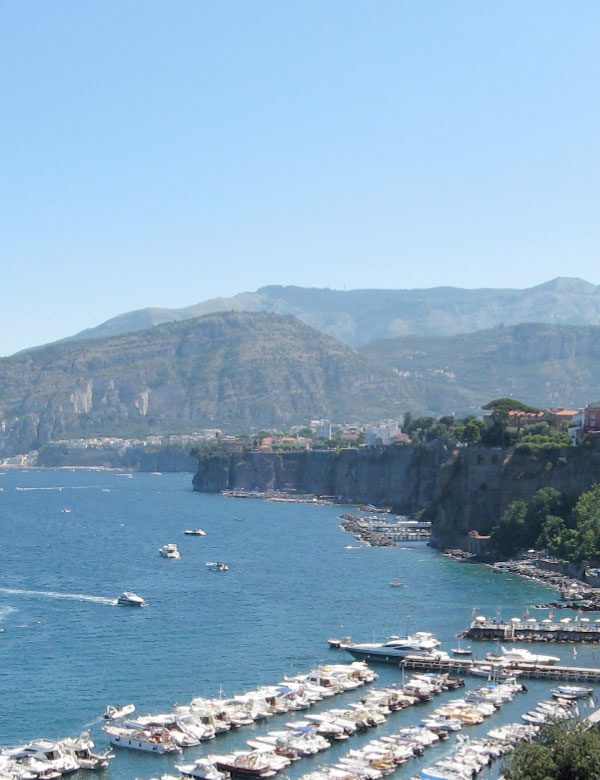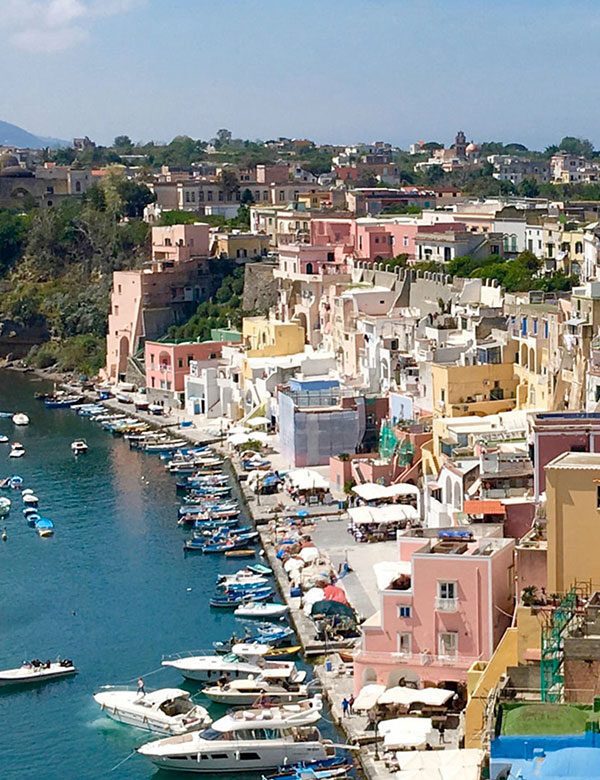Salerno
The city of Salerno is a gem set between two coastlines, the Amalfi coast - with its terraces overlooking the blue - and the Cilento coast - characterised by long sandy shores and the timeless beauty of the Greek temples of Paestum. Its wide gulf overlooks the sea, offering wonderful views to those who reach it by boat.
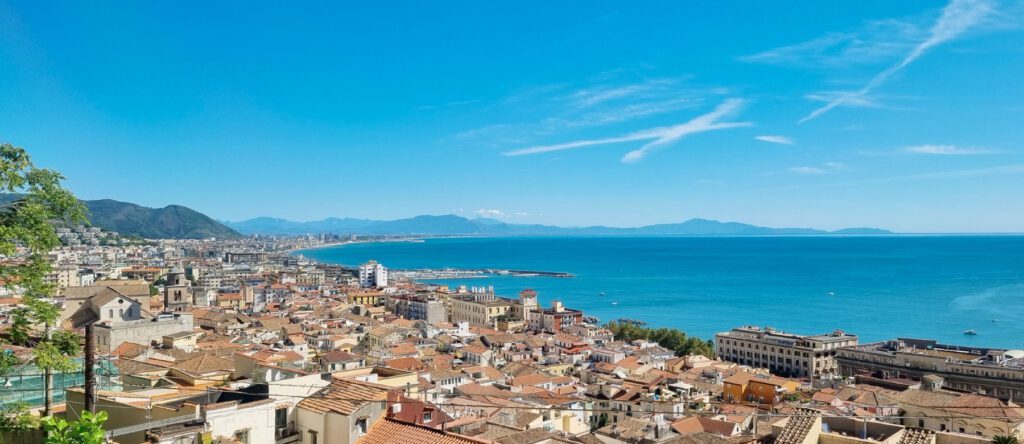
In the past, Salerno was part of the Lombard Duchy of Benevento: due to its strategic position on the sea, it was an important trading centre with other Mediterranean regions. Here, in the 18th century, Duke Arechi II built the residence of his court, a medieval stone fortress 300 metres above sea level, overlooking the city's vast gulf. Today, the Arechi Castle is one of the main symbols of Salerno, with a magnificent view and a small museum of ancient ceramics and coins from the Lombard period. Another important symbol of the city is undoubtedly the cathedral of St Matthew, built in just five years between 1080 and 1085 and consecrated by Pope Gregory VII.
The Cathedral has a Romanesque structure dating back to its foundation and a bell tower in the Arabic-Norman style, but it blends fascinating elements of Byzantine and Baroque origin. In its crypt, it houses the remains and relics of St Matthew, the city's patron saint to whom the church is dedicated. The feast in honour of the saint is celebrated every year on 21st September and 6th May, the day of the transfer of the relics, with long processions and spectacular fireworks over the sea. The name of Salerno recurs in history for several important events that took place in this city. Following the Landing of the Allies in 1943, it was the home of the first governments of post-fascist Italy and became the Italian capital until after the liberation of Rome. The so-called 'Salerno Turn' took place here, where a compromise was found between the old monarchy and the anti-fascists for a government of national unity. But even earlier, at the beginning of the Middle Ages, Salerno hosted the birth of the Salerno Medical School: the oldest medical university in the world. Walking along Via dei Mercanti, the ancient street full of boutiques and artisan workshops that crosses the old city centre, you can reach the Minerva Gardens: Europe's first Botanical Garden for the cultivation of plants and herbs for medical purposes, established by Dr Silvatico of the Salerno Medical School. Even today, the Gardens are rich in rare and exotic species, such as the legendary mandrake, once believed to have extraordinary powers.
Immerse yourself in the alleyways of the centre, where the smell of freshly hung laundry mingles with the scent of antiquity, and you can admire a true open-air art gallery: starting from the Rione Fornelle, a historic district of Lombard origin, each street tells something of the city through fascinating works of street art and the romantic verses of the well-known Salerno poet Alfonso Gatto. At Christmas time, then, every corner of the city is enveloped in the magical atmosphere of 'Luci D'Artista': the main squares that host Salerno's nightlife, such as Largo Campo, Piazza Flavio Gioia better known as 'La Rotonda' and Piazza Sant'Agostino, are filled with marvellous light installations created by artists from all over the world. A visit to Salerno during the Christmas period is well worth it. And once you're here, you absolutely cannot miss a walk along the endless seafront, from which you can reach Piazza della Libertà, Europe's largest square, and Zaha Hadid's fascinating maritime station. A shell on the sea, from which you can look out over the entire gulf and the two coastlines, which glow golden at night. For a romantic soul, who loves to get lost gazing at boundless landscapes in the blue and wandering through alleys and streets where stories of all times intertwine and are told, Salerno is definitely the ideal destination. Reach it with us and prepare yourself for continuous wonder.
 Hello Alilauro 0814972238
Hello Alilauro 0814972238









